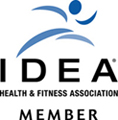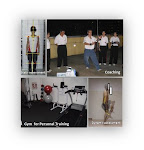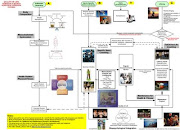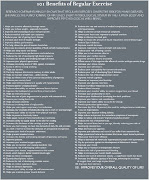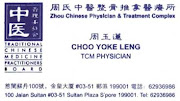MInd Training for TaiChi. Call +65 94312135 or email to tsenyu1@singnet.com.sg
TAI CHI SYNERGY SERVICES
The rack can be purchased and is specifically designed to achieve mobility (Refer to http://taichihealthfitness.blogspot.com/ for the full descriptions and purchases).
■ It allows you to stretch the anterior muscles of the chest and shoulders that are deemed short and often inflexible due to poor posture.
■ It mobilises the thoracic spine, increasing your ability to extend and rotate through this important area.
■ Mobilising the thoracic region helps increase the available movement in the shoulder and pelvic region, allowing us to move more freely and efficiently.
■ Serves as treatment equipment and later as fitness equipment during the maintenance phasse. Enhance quality of life over life cycle
Many good results and testimontials have been received from Sedentary adults, Yoga, Pilates and Tai Chi practioners / instructors, cyclists, runners, swimmers, golfers, tennis players, badminton players, dancers, scoliosis clients, clients with low back pain / hand numbness / nerves impingement etc.
Provides You With Physical Activity Tips and Recommendations.
Tuesday, December 27, 2011
Thursday, November 24, 2011
Wednesday, November 16, 2011
The effects of heat and massage application on autonomic nervous system.
Author(s)
Lee YH, Park BN, Kim SH.
Published
Nov, 2011
Published In
Yonsei Med J. 2011 Nov 1;52(6):982-9
Abstract
Purpose: The objective of this study is to evaluate the effects of heat and massage application on autonomic nervous system. Materials and Methods: One hundred thirty-nine subjects volunteered and completed this study. Heat and massage was daily applied for 40 minutes, 5 days a week for 2 weeks. Primary-dependent measures included heart rate variability, sympathetic skin response, and serum cortisol and norepinephrine levels. Results: Serum cortisol levels were significantly decreased at 2 weeks compared to baseline (p=0.003). Plasma norepinephrine levels at 4 weeks were significantly decreased compared to baseline (p=0.010). Heart rate, using the power spectra, increased significantly after 2 weeks compared to baseline. Of autonomic nerve conduction measures, latency was significantly increased at 2 and 4 weeks compared to baseline (p=0.023, 0.012), and amplitude was significantly decreased at 4 weeks compared to baseline (p=0.008). There were no serious adverse events such as burns or other major complications.
Conclusion: The results of this study suggest that heat and massage applications provide relaxation to the autonomic nervous system without serious adverse events.
Friday, October 7, 2011
Friday, September 2, 2011
35km FUN Night Walk Summary on 29-30 Aug 2011
Thursday, August 25, 2011
What is My Sport Doing to My Body ?
Tuesday, July 26, 2011
Thursday, June 30, 2011
Tai Chi and Psoriatic Arthritis
Wednesday, June 29, 2011
Monday, May 30, 2011
Intense Exercise May Preserve Cancer Cell and a Need to Follow Exercise Programming
1. American College of Sports Medicine. (2003). ACSM's exercise management for persons with chronic diseases and disabilities (2nd ed.): Human Kinetics.
2. Janet Weller. (2011, May). Intense Exercise May Preserve Cancer Cells. IDEA Fitness Journal, 14.
Tuesday, April 12, 2011
Glucosamine and Chondronitin Fail in Research Trial
Monday, March 21, 2011
Exercise Induced Changes To Brain
Exercise improves our physical and mental health—that is now beyond debate. The physical benefits are obvious; we know that exercise lowers blood pressure, decreases cholesterol, reduces fat, adds muscle and improves cardiovascular function. But how is it that exercise also reduces stress, anxiety and depression and allows us to maintain focus at work and to think clearly?
You might easily assume that improved physical health drives improved mental health; that a healthy body breeds a healthy mind. But the truth is, we know much more about how exercise affects the body than how it affects the mind. That brings us to the issue of measuring the mind and to the proverbial “mind-body problem”: Is the mind separate from the body? It is a question that has tormented philosophers since René Descartes suggested nearly 400 years ago that mind and body were clearly separate but the brain (the pineal gland to be precise) was the place where mind interacted with body. This Wizard of Oz sort of view suggests that a peek behind the neurobiological curtain will unveil some ethereal forces pulling levers.
Regardless of your view on the issue, accept for the time being that our cognitive, perceptual and emotional faculties—indeed, our sense of self—are all nestled within the 100 billion or so neurons (nerve cells) that make up the brain. So if exercise can have lasting effects on the mind, then exercise must also affect the brain. As it turns out, the brain is incredibly dynamic. It is not hard-wired, as we once believed, and it responds to exercise in much the same way that heart, lungs and muscles do. The brain can change its structure and function by adding new neurons, making new connections between neurons (synapses) and even creating brand-new blood vessels, all in response to different forms of exercise (see Figure 1).
A Powerful Healing Agent for Change
Over the last two decades, neuroscientists have begun to reveal how physical activity—whether it be endurance, strength or skill training—can change the neurochemistry, structure and function of the brain. We are starting to understand how these changes in brain biology affect our cognitive, sensory, motor and emotional behaviors. We are also discovering that the neurobiological imprint of exercise can help treat and possibly even prevent a number of psychiatric disorders (such as depression and anxiety) in addition to neurological disorders (such as stroke, Alzheimer’s disease and Parkinson’s disease).
Exercise Improves Cognitive Function
Although the American College of Sports Medicine (ACSM) recommends at least 30 minutes of moderately intense aerobic exercise 5 days per week (ACSM & AHA 2007), alarmingly it is estimated that 74% of all Americans fail to meet this requirement, and the lack of activity represents a major contributor to rising healthcare costs. Aside from the obvious effects on physical health, there is mounting evidence that a sedentary lifestyle also affects the brain—and in turn lessens mental capacity. Sibley and Etnier (2003) found a clear connection between how much schoolchildren exercised and their cognitive performance: the more aerobic exercise the children engaged in, the better they performed on verbal, perceptual and mathematical tests. The same pattern of results was found in older adults: aerobic training improved cognitive performance (Colcombe & Kramer 2003), and active lifestyles decreased age-related risks for cognitive impairment and dementia (Yaffe et al. 2009). Not surprisingly, these cognitive effects were accompanied by clear changes in brain structure and function.
Exercise Changes Brain Function
The fact that exercise enhances cognition suggests it must have some effects on the brain that outlast the exercise experience itself. That is, exercise must somehow change brain function in a lasting manner. Indeed, research supports this hypothesis; the reduced cognitive capacity in sedentary individuals is also associated with different patterns of brain activity—both at rest and while performing mentally challenging tasks—than those observed in active subjects.
Although a number of brain areas are involved in the complex cognitive tasks that we engage in on a daily basis, the cerebral cortex is a major player. Compared with sedentary people, active individuals show greater baseline levels of cortical activity (Dustman et al. 1990) and more activity in various brain regions when performing cognitive tests (Polich & Lardon 1997). Some cortical areas show increases in activity when we are struggling with a particular task. One such area that is especially sensitive in this regard is the anterior cingulate cortex (ACC). Part of the brain’s limbic system, the ACC has connections with numerous brain areas involved in processing sensory, motor, emotional and cognitive information. This brain area becomes very active during moments of indecision or confusion when we are posed with a problem. After a 6-month walking intervention, people showed decreased ACC activity relative to nonaerobic toning or stretching groups (Colcombe et al. 2004), the implication being that less activity in the ACC contributes to the enhanced cognitive function resulting from exercise.
Exercise-related changes in brain function are not limited to areas of the cortex concerned with cognitive function. Brain areas that are engaged during movement are also affected. One key cortical area is the motor cortex. This strip of tissue contains neurons that send information down to the spinal cord to cause muscle contraction. Individuals engaged in regular exercise show reductions in the amount of activity within the motor cortex when performing simple movements (Voelcker-Rehage, Godde & Staudinger 2010). While this might seem counterintuitive, one interpretation is that the cortex is more efficient at controlling movement and therefore requires less effort to produce movement.
Exercise Changes Brain Structures
Although the structure of the brain is highly complex, it can be broken down into two general components. Gray matter contains all of the neurons and supporting cells, while white matter consists of the axons of these neurons (nerve cell fibers) that carry signals from one area to another. One might compare this to the way in which most large cities are organized, with houses and buildings connected by streets and freeways.
Magnetic resonance imaging (MRI) allows for the measurement of gray and white matter and can reveal something about the way that exercise influences the overall structure of the brain. MRI scans have shown that exercise boosts overall brain volume (Colcombe et al. 2006), increasing both gray matter (Colcombe et al. 2006) and white matter (Gordon et al. 2008). Interestingly, these changes can occur over relatively short periods of time with what might seem like minimal amounts of training. After learning to juggle for only a few weeks, for example, study subjects showed increases in gray matter within regions of the brain concerned with integrating visual and motor information (Draganski et al. 2004).
In Conclusion
Our knowledge of the effects of exercise on the body and mind continues to expand. The development of new technologies is indeed allowing us to “peek behind the cerebral curtain” to see which levers are being pulled—to understand the biology of how exercise improves both body and mind. This knowledge will allow us to harness the brain’s endogenous capacity to adapt to experience and will guide the development of new therapies to treat the damaged or diseased brain as well as to improve our general quality of life. This has become increasingly important as our population ages and the stressors of this fast-paced world mount.
Neurons are arguably the most high-maintenance cells in the body. They require a constant supply of glucose and oxygen or they begin to die. The brain represents 3% of total body weight (Love & Webb 1992) but uses 20% of total blood supply and 25% of total oxygen supply. Neurons are constantly being bombarded by hundreds of neurochemicals, and the DNA must work incredibly hard to keep up with making all of the necessary proteins to maintain function.
There is one family of neurochemicals known as growth factors. So named because they can make neurons “grow,” these neurochemicals have been clearly shown to increase in the brain in both number and size during exercise (van Praag, Kempermann & Gage 1999). Think of growth factors as “fertilizer” for the brain. They act to keep neurons healthy and reduce their susceptibility to cell death, which may account for why exercise appears to combat the onset of many neurological diseases, including Parkinson’s disease (Xu et al. 2010) and Alzheimer’s disease (Scarmeas et al. 2010).
One of the more exciting discoveries in neuroscience in the last 20 years has been that the adult brain can continue to make new neurons throughout the lifespan. It doesn’t happen equally in all brain areas, for reasons that are not totally understood, but it happens readily in one specific area: the hippocampus. This is an evolutionarily older part of the brain that is concerned with forming memories and processing emotion, which may help explain some of the cognitive and emotional benefits of exercise.
Interestingly, aerobic exercise can increase neurogenesis (generation of new neurons) within the hippocampus at many stages of development, including in the neonatal (Kim et al. 2007), juvenile (Lou et al. 2008) and adult brains (van Praag, Kempermann & Gage 1999). The fact that the hippocampus is a critical brain structure used in memory may explain why aerobic exercise can enhance learning (Vaynman & Gomez-Pinilla 2006). Furthermore, we know that stress reduces neurogenesis, an effect that may contribute to depression and anxiety (Lucassen et al. 2010). Therefore, the enhanced neurogenesis brought about by exercise may represent the neurobiological mechanism by which regular exercise reduces depression.
ACSM & AHA (American College of Sports Medicine & American Heart Association). 2007. Physical activity and public health guidelines. www.acsm.org/AM/Template.cfm?Section=Home_Page&TEMPLATE=CM/HTMLDisplay.cfm&CONTENTID=7764#Under_65; retrieved Jan. 7, 2011.
References
Colcombe, S., & Kramer, A. F. 2003. Fitness effects on the cognitive function of older adults: A meta-analytic study. Psychological Science, 14 (2), 125–30.
Colcombe, S.J., et al. 2004. Cardiovascular fitness, cortical plasticity, and aging. Proceedings of the National Academy of Sciences, 101 (9), 3316–21.
Colcombe, S.J., et al. 2006. Aerobic exercise training increases brain volume in aging humans. Journal of Gerontology, Series A Biological Sciences and Medical Sciences, 61 (11), 1166–70.
Draganski, B., et al. 2004. Neuroplasticity: Changes in grey matter induced by training. Nature, 427, 311–12.
Dustman, R.E., et al. 1990. Age and fitness effects on EEG, ERPs, visual sensitivity, and cognition. Neurobiology of Aging, 11 (3), 193–200.
Gordon, B.A., et al. 2008. Neuroanatomical correlates of aging, cardiopulmonary fitness level, and education. Psychophysiology, 45 (5), 825–38.
Kim, H., et al. 2007. The influence of maternal treadmill running during pregnancy on short-term memory and hippocampal cell survival in rat pups. International Journal of Developmental Neuroscience, 25 (4), 243–49.
Lou, S.J., et al. 2008. Hippocampal neurogenesis and gene expression depend on exercise intensity in juvenile rats. Brain Research, 1210, 48–55.
Love, R., & Webb, W. 1992. Neurology for the Speech-Language Pathologist. Boston: Butterworth-Heinemann.
Lucassen, P.J., et al. 2010. Regulation of adult neurogenesis by stress, sleep disruption, exercise and inflammation: Implications for depression and antidepressant action. European Neuropsychopharmacology, 20 (1), 1–17.
Polich, J., & Lardon, M.T. 1997. P300 and long-term physical exercise. Electroencephalography and Clinical Neurophysiology, 103 (4), 493–98.
Scarmeas, N., et al. 2010. Physical activity and Alzheimer disease course. American Journal of Geriatric Psychiatry; doi:10.1097/JGP.0601381eb00a9.
Sibley, B.A. & Etnier, J.L. 2003. The relationship between physical activity and cognition in children: A meta-analysis. Pediatric Exercise Science, 15 (3), 243–56.
Van Praag, H., Kempermann, G., & Gage, F.H. 1999. Running increases cell proliferation and neurogenesis in the adult mouse dentate gyrus. Nature Neuroscience, 2 (3), 266–70.
Vaynman, S., & Gomez-Pinilla, F. 2006. Revenge of the “sit”: How lifestyle impacts neuronal and cognitive health through molecular systems that interface energy metabolism with neuronal plasticity. Journal of Neuroscience Research, 84 (4), 699–715.
Voelcker-Rehage, C., Godde, B., & Staudinger, U.M. 2010. Physical and motor fitness are both related to cognition in old age. European Journal of Neuroscience, 31 (1), 167–76.
Xu, Q., et al. 2010. Physical activities and future risk of Parkinson disease. Neurology, 75 (4), 341–48.
Yaffe, K., et al. 2009. Predictors of maintaining cognitive function in older adults: The Health ABC study. Neurology, 72 (23), 2029–35.
Sunday, February 6, 2011
Tai Chi for Health - Steps Movement [For NLB]
OR
Monday, January 31, 2011
Tai Chi Chuan for Breast Cancer Survivors
Abstract:
Background/Aims: Treatment for breast cancer produces side effects that diminish functional capacity and quality of life (QOL) among survivors. Tai Chi Chuan (TCC) is a moderate form of exercise that may improve functional capacity and QOL in these individuals. Women who completed treatment for breast cancer were randomized to receive TCC or psychosocial support therapy for 12 weeks (60 min; three times weekly).
Results: The TCC group demonstrated significant improvements in functional capacity, including aerobic capacity, muscular strength, and flexibility, as well as QOL; the psychosocial support therapy group showed significant improvements only in flexibility, with declines in aerobic capacity, muscular strength, and QOL. Conclusions: The TCC group exhibited significant improvements in functional capacity and QOL. These data suggest that TCC may enhance functional capacity and QOL among breast cancer survivors.
References
Mustian KM, Palesh OG, Flecksteiner SA. Med Sport Sci. 2008;52:209-17.
Sunday, January 30, 2011
Is tai chi beneficial for improving aerobic capacity? A systematic review - Reasons for Adding Tai Chi Walk to the Maintenance Program
Abstract
Tai Chi has been claimed to generate beneficial effects with respect to a wide range of diseases. The purpose of this systematic review was to evaluate evidence from randomised clinical trials (RCTs) testing the effectiveness of tai chi for increasing aerobic capacity. Systematic searches were conducted on 14 electronic databases without restrictions on population characteristics or the language of publication. The outcome measures considered for inclusion were changes in maximal oxygen consumption as a test for aerobic capacity. Five RCTs met all inclusion criteria. Three RCTs compared the effects of tai chi with no treatment. The meta-analysis failed to show an effect of tai chi on aerobic capacity compared with sedentary controls (n = 151, weight mean difference, ml/kg/min, 0.50, 95% CI -1.14 to 2.15, p = 0.55). Two RCTs compared tai chi with conventional physical exercise including brisk, low intensity and moderate intensity walking, and aerobic exercise. The results show that tai chi was not statistically significantly superior to physical exercise.
In conclusion, the existing evidence does not suggest that regular tai chi is an effective way of increasing aerobic capacity.
References
Br J Sports Med. 2009 Aug;43(8):569-73. Epub 2008 Nov 19.
Sunday, January 16, 2011
My Core Services (Call SE Tan at 9431-2135 OR email: tsenyu1@singnet.com.sg)


Client Testimonials
Joan, Tai Chi student from Yio Chu Kang CC
"Hi Maureen, Enyu,
Thank you for taking time to prepare and share your knowledge at our training clinic on Sunday. Nice to have you around to share on your expertise. I think I speak for all attendees to say that we all brought back muck insight to our walking techniques.
FYI and already confirmed, we will also load the pictures into LTAW's website "
Ng Yousi - Let's Take A Walk 2009 - Chairperson
Weizhen Chen - Let's Take A Walk 2009 Committee
"I learnt loads and enjoyed Sat's session!" Thank you very much Coach Tan :)" - Tapering Training
" The whole team (Maureen, GG, Coach Tan and Jon) worked well with each other strengths, which I truly respect. Based on the tentative resulta, EneRgyworkz team was accompanied by other teams with similar timings. More importantly, the distance was finished and not with terrible injuries"
Diane, Shariff, GiaYee - EneRgyWorkz Marathoners NorthFace100 2009
"I am doing the exercise prescriptions every daily and really I am feeling better. Thank you very much with you around, I will be well"
Ang KH, Polytechnic Lecturer - walking deficiencies, cannot squat, diabetes and high blood pressure (under medication)
" Wishing you a Happy Teacher's Day (1st Sep). Thank you for your patience in helping your student auntie to heal. I managed to knee at church on Sunday. I am so happy that my legs does not hurt already. I will always remember you as my World Best Teacher :-) Thank you. "
Elise Nge, Business Executive
"I have followed the training methods you taught me on stretching and postural techniques; and now when I do my Tai Chi, my knee pain has disappeared. Truly appreciate and thank you so much for teaching me the scientifc ways of practising Tai Chi"
Bay MK, Product Promoter
" Thank you for treatment to solve my heel pain problem(plantar facsiitis). It really hurt me alot before I met up with you. You have trained me on the correct posture and your coaching is easily understood. Thank you"
Kelvin Koh, Pharmaceutical Manager
" Your treatments using T-Rack and corrective exercise therapy prescriptions allow me to correct my conditions and my pain has reduced tremendously. I can now do my self treatment at home and thank you for spending your valuable time"
Zubai, Business woman (Client with scoliosis)
"Dear Therapists of Let's Take a Walk 2008
8 months of planning, 13 committee members, 33 hours of event, close to 100 volunteers, over 900 participants and more than $60,000 raised. These are some numbers from Let's Take A Walk 2008 successfully held over the last weekend.
Thank you. Thank you to all of you who have sacrifice your time to help us over the weekend. Your contribution and professionalism has contributed to the success of our event."
Chan Peng, On behalf of Organising Committee 2008
Click here to download the full Your Prescription for Health flier series, or choose a flier below
Exercise is Medicine
Information and recommendations for exercising safely with a variety of health conditions.
Exercising with Amyotrophic Lateral Sclerosis
Exercising with Anxiety and Depression
Exercising with Atrial Fibrillation
Exercising Following a Brain Injury
Exercising Following Cardiac Transplant
Exercising with Cerebral Palsy
Exercising with Chronic Heart Failure
Exercising with Chronic Obstructive Pulmonary Disease
Exercising with Chronic Restrictive Pulmonary Disease
Exercising Following Coronary Artery Bypass Graft Surgery
Exercising with Cystic Fibrosis
Exercising with End-Stage Metabolic Disease
Exercising Following a Heart Attack
Exercising with Hyperlipidemia
Exercising while Losing Weight
Exercising with Lower Back Pain
Exercising Following Lung or Heart-Lung Transplantation
Exercising with Mental Retardation
Exercising with Multiple Sclerosis
Exercising with Muscular Dystrophy
Exercising with a Pacemaker or Implantable Cardioverter Defibrillator
Exercising with Parkinson's Disease
Exercising with Peripheral Arterial Disease
Exercising with Polio or Post-Polio Syndrome
Exercising with Type 2 Diabetes
Exercising with Valvular Heart Disease
Why We Need to Retool "Use It Or Lose It": Healthy Brain Aging
Johns Hopkins Arthritis Center
TaiChi Routines and Circuit Training Depot (road near the rail track is now accessible)
View Taichi Depots and Training Routes in a larger map
This requires a proper exercise prescriptions (daily and weekly) for individuals and appropriate circuit design (including bad weather) using existing natural environment (depending on individual preferences, preferably mixture of indoor and outdoor) around us to keep us healthy and fit. Time must be well-spend.
For example: some of my clients are doing warming up and stretching at home, their Taichi aerobic activties are done using the outdoor circuit and cooling down with Taichi routines followed by stretching near thereby their house. The re-hydration with fuild is done at home during rest followed by his bath. They have multiple version of programs (changing the variables of the components and types) for variety.
If you are interested, call +65 94312135 or email to tsenyu1@singnet.com.sg
TaiChi Jogging For Neuromuscular Body Alignment (11km)
View TaiChi Jogging Route (11km) in a larger map
Bukit Timah Nature Reserve Trekking

Refer to dotted "Red" route. Email to tsenyu1@singnet.com.sg if you want to be informed and to participate of this event. It takes less than 2 hours for complete circuit. Timing varies and depending on the fitness and size of the group. Learning and understand proper human walking mechanics and the need of conditioning for Activities of Daily Living (ADL)
Hiking Route from Yew Tee to Bukit Timah Hill & MacRitchie Trails
Bukit Timah Nature Reserve
--------------------------------
http://web.singnet.com.sg/~tsenyu1/Bukit_Timah_Hiking_Route_(From_Yew_Tee).jpg
MacRitchie hiking trails
---------------------------
http://web.singnet.com.sg/~tsenyu1/MacRitchie_Hiking_Trails_(From_Bukit_Timah_Nature_Reserve).jpg
If you are interested, call +65 94312135 or email to tsenyu1@singnet.com.sg
21km Route (Half Marathon)
View 21km Route (Half Marathon) in a larger map
LTAW - 50km Power Walk
View LTAW 2009 50Km PowerWalk in a larger map
LTAW 50 - 100km Extreme Walk
View LTAW 2009 50-100Km ExtremeWalk in a larger map
.jpg)



























